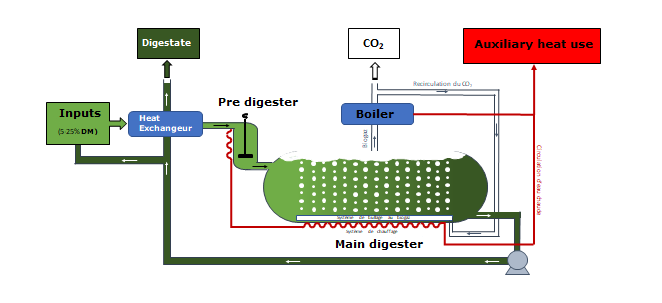


MicroMétha®for WWTPs
Wastewater treatment is carried out into several stages in WWTP's
(WasteWater Treatment Plant). After having being screened (trapping
of bulky matter) and sieved (finer filtration), the wastewater is
decanted in order to extract the sands (grit removal) and fatty
substances (de-oiling). The water is then sent into an aeration
basin in which the polluting organic matter is degraded by microbial
oxidation. After clarification, an ultimate waste persists, a thickened
sludge (after having being pressed through a screw press) to be
spread on agricultural field. To sanitize it and stabilize its
fermentation, the operator needs often to add lime (operation called
liming).
The grease retained during de-oiling, the organic matter that is
oxidized and the spreading sludge are all carbonaceous materials
that can produce energy. The MicroMétha® process consists in
methanizing this organic material. The biogas produced can then
generate heat and electricity by cogeneration. This biogas can also be
purified into fuel or natural gas.
The MicroMétha® methanization unit degrades organic matter into
methane under thermophilic (high temperature) and anaerobic
(without the presence of oxygen or air) conditions. The fermentation
temperature (50-55°C) allows faster degradation than in mesophilic
conditions (35°C) and has the great advantage of sterilizing the
sludge thus avoiding the need for liming. The residence time of the
sludge is shortened by half to release their methanogenic potential
(20 days in thermophilic versus 40 in mesophilic). The result is an
energy production unit twice as compact. A patented heat recovery
exchanger heats the incoming sludge with the outgoing sludge and
considerably reduces the thermal energy input.
MicroMétha® units process scheme for WWTP's

The MicroMétha® unit advantages